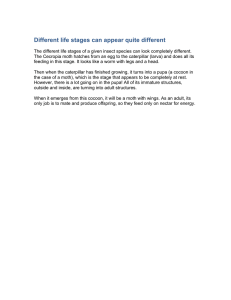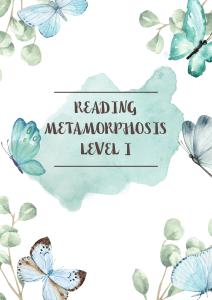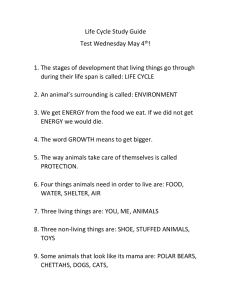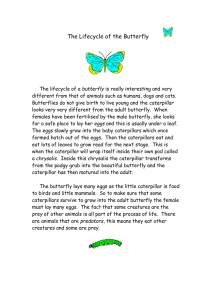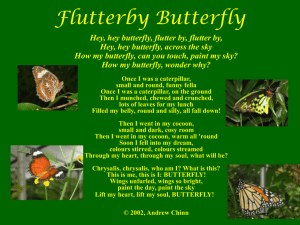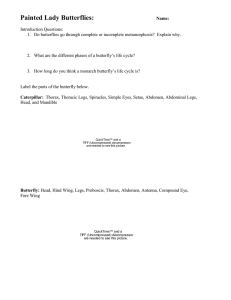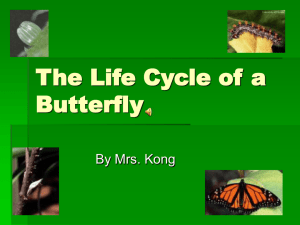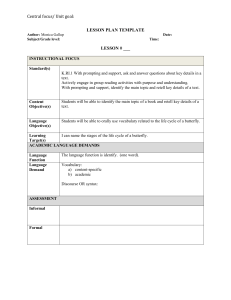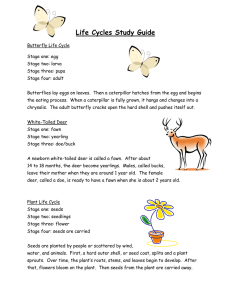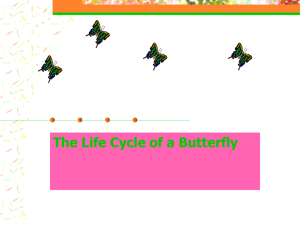Butterfly Life Cycle I
advertisement
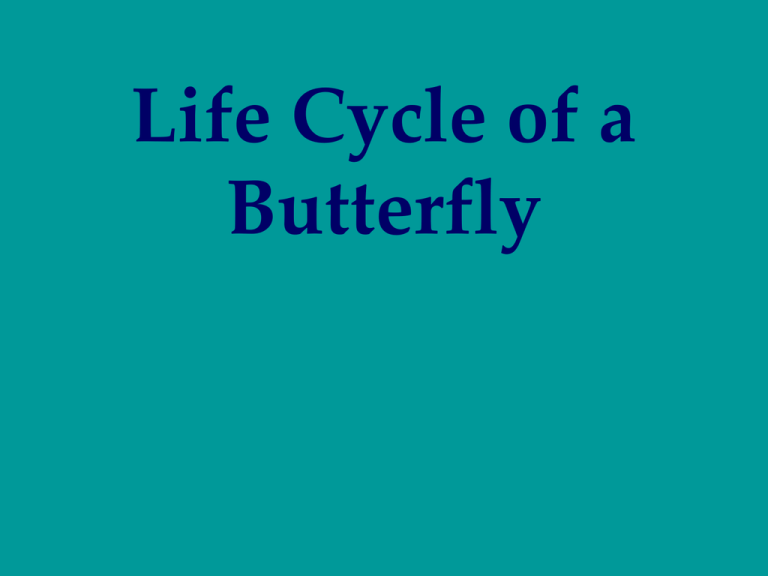
Life Cycle of a Butterfly The egg is a tiny, round, oval, or cylindrical object, usually with fine ribs and other microscopic structures. The female attaches the egg to leaves, stems, or other objects, usually on or near the intended caterpillar food. The caterpillar or larva is the long, worm-like stage of the butterfly or moth. It often has an interesting pattern of stripes or patches, and it may have spine-like hairs. It is the feeding and growth stage. As it grows, it sheds its skin four or more times so as to enclose its rapidly growing body. The chrysalis (or pupa) is the transformation stage within which the caterpillar tissues are broken down and the adult insect's structures are formed. The chrysalis of most species is brown or green and blends into the background. Many species spend winter in this stage. The adult emerges from the chrysalis. The adult is a colorful butterfly or moth. It is the reproductive and mobile stage for the species. The adults undergo courtship, mating, and egg-laying. The adult butterfly or moth is also the stage that migrates or colonizes new habitats.

